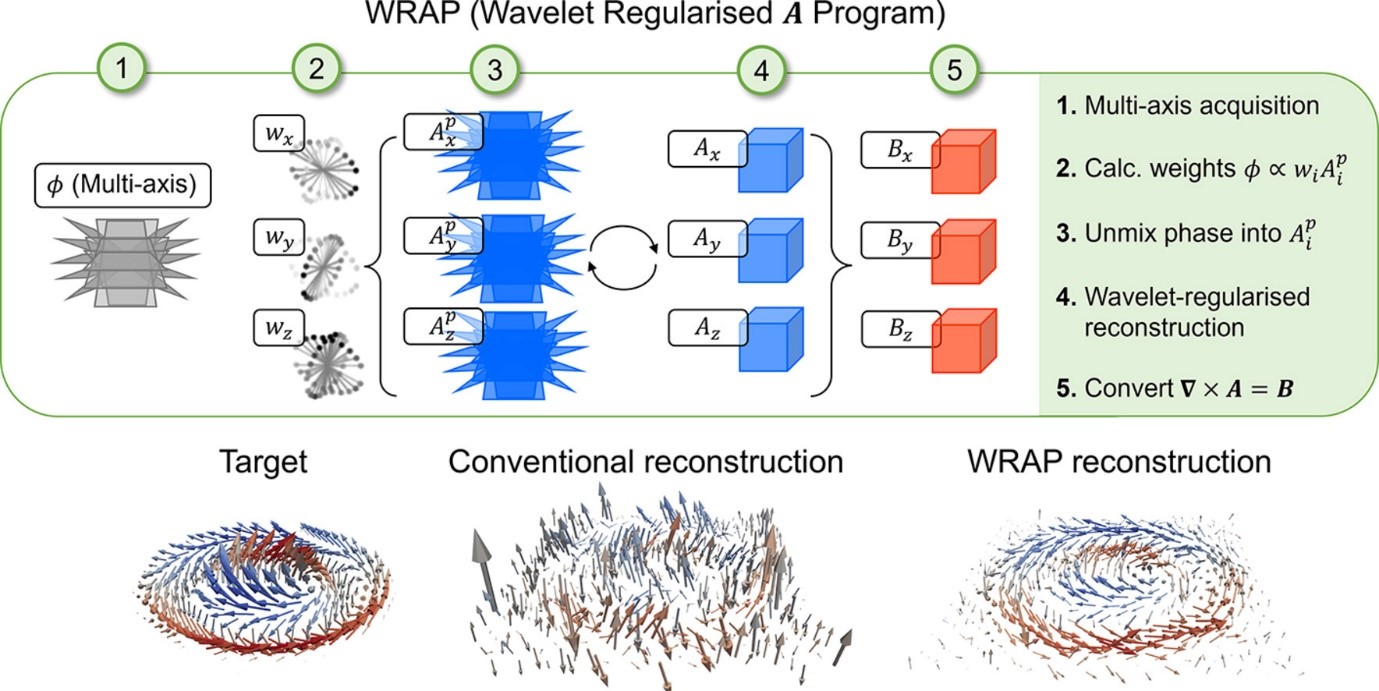This paper highlights a new approach to reconstructing the 3D magnetic B-field in nanoscale objects using electron microscopy. In particular we show how using a tilt series of electron holograms it is possible to achieve a higher fidelity reconstruction that the conventional approach. Unlike the conventional method, which requires two mutually perpendicular tilt series in order to reconstruct the B-field directly, our new method reconstructs first the magnetic vector potential A. The phase images that derive from the electron holograms can be seen as projections of the vector potential A and as such correspond directly to the Radon transform inherent in any tomographic approach. The fidelity of the reconstruction algorithm is enhanced by regularising the minimisation using wavelets, recognising that the reconstructed A- or B-field is ‘sparse’ in the wavelet domain. Our new approach allows data to be used from any sample orientation, relaxing the condition for two mutually perpendicular tilt series, and allowing the use of more ‘exotic’ – and efficient – acquisition strategies: see G. Lewis et al., "Cones and spirals: multi-axis acquisition for scalar and vector electron tomography", Ultramicroscopy, 252 (2023), 113775, 10.1016/j.ultramic.2023.113775.
Figure illustrates the new algorithm called WRAP to determine the three components of the B-field, and a comparison of a skyrmion-like phantom reconstructed with a conventional algorithm and with WRAP.
George R. Lewis, Daniel Wolf, Axel Lubk, Emilie Ringe and Paul A. Midgley, "WRAP: A wavelet-regularised reconstruction algorithm for magnetic vector electron tomography", Ultramicroscopy, 253 (2023) 113804

